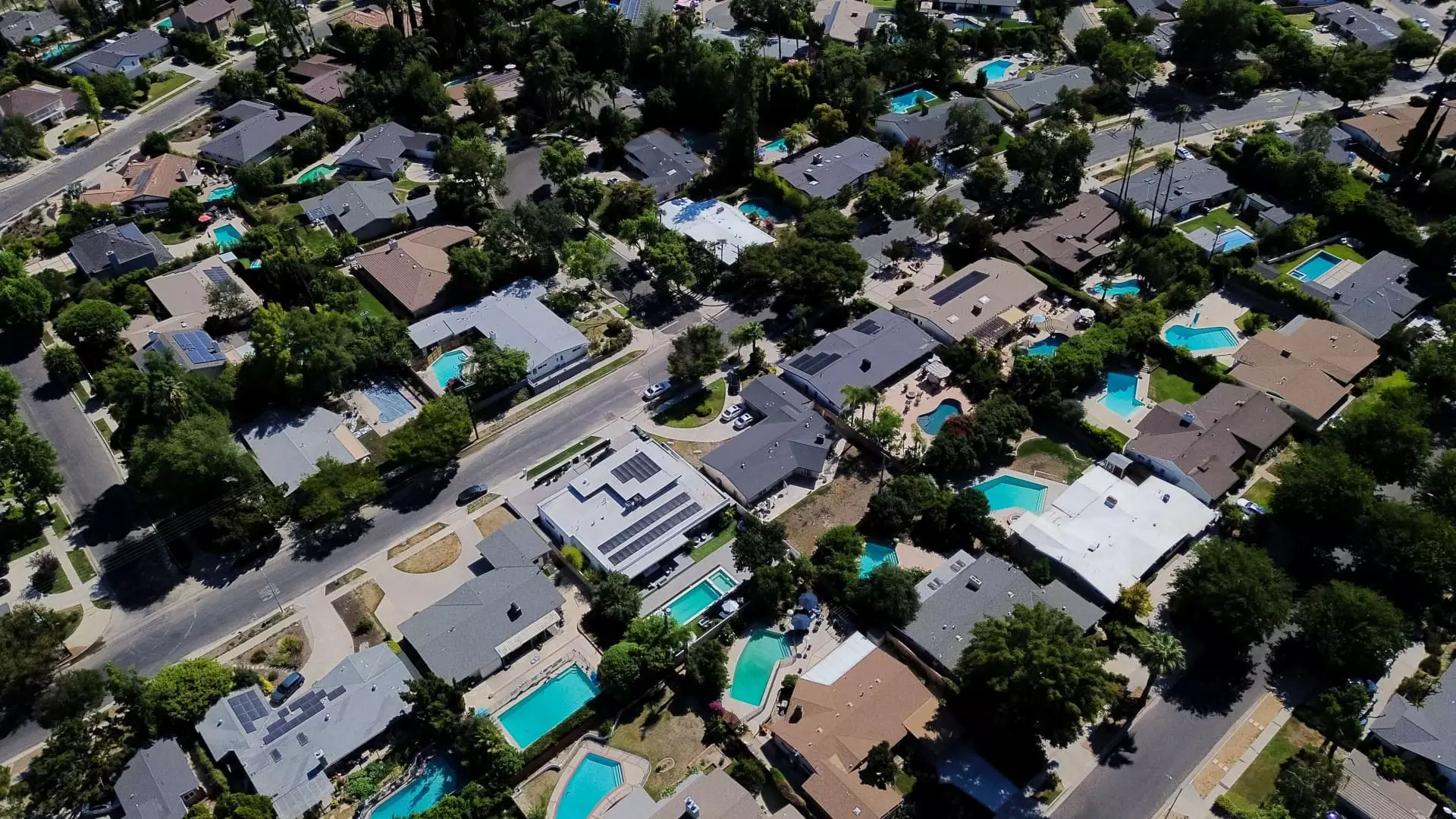In recent months, the U.S. housing market has been portrayed as a resilient sector, yet a closer examination reveals a troubling reality: a market under strain, hampered by structural flaws and indifferent to the needs of most Americans. While headlines trumpet modest growth in home prices and limited sales activity, these narratives mask the underlying weakness—particularly for first-time buyers and middle-income households—highlighting a market that is increasingly detached from the broader economic and social wellbeing.
The latest data shows a 2.7% decline in existing home sales for June, falling to just under four million units—far surpassing the modest 0.7% dip analysts anticipated. This divergence signals a deeper malaise that policy makers and industry stakeholders seem slow to acknowledge. Despite stable mortgage rates over the past several months, these rates remain stubbornly high, hovering around 6.77%. Such rates are a significant barrier for aspiring homeowners, discouraging many from entering the market altogether. The notion that the housing market is “resilient” glosses over a critical truth: high borrowing costs are actively suppressing growth, particularly among first-time buyers.
Structural Constraints and Market Imbalance
Persistent supply shortages continue to distort the market, with listings rising 15.9% year over year but still falling short of equitable demand. Today, there are approximately 1.53 million homes for sale—a six-month supply at current sales rates, maintaining a decidedly seller-bias environment. Developers have failed to bridge the widening gap between housing needs and construction output, largely due to regulatory hurdles, rising costs, and a cautious construction industry. This underinvestment has created a bottleneck, inflating prices across the board.
Home prices, now averaging $435,300, have consistently set new records for June—the 24th month of continuous annual increases—further alienating those dreaming of ownership. While higher-end homes are selling more quickly and accounting for a larger share of total transactions, middle- and lower-income households are caught in an increasingly unmatchable situation: escalating prices coupled with stagnant wages, and rising mortgage costs.
The disconnect becomes even sharper when considering the buyer demographics. First-time buyers, who traditionally comprise around 40% of the market, now account for only 30%. Meanwhile, cash deals still constitute nearly 29% of transactions, a suppression from pre-pandemic levels, which signals entrenched investor activity and a potential bid to keep the market artificially afloat. This dynamic fuels speculation rather than affordability, rendering the dream of homeownership more elusive.
The Economic and Social Toll of Market Stagnation
Beyond the numbers lies a broader societal issue: a growing segment of Americans finds itself excluded from the housing market’s gains. Wealth statistics show homeowner equity increasing by approximately $140,900 over the past five years, highlighting a select few benefiting from rising prices. Meanwhile, millions remain locked out or are burdened with long wait times— homes now spend an average of 27 days on the market, with higher-end homes selling faster than those in more affordable brackets.
The narrative of a resilient housing market often masks the stark reality of socioeconomic division. Rising prices benefit existing homeowners and investors, further consolidating wealth, yet hinder equity building for first-time buyers. The market’s sluggish recovery signals a broader issue: the policies and economic conditions are favoring speculative gains rather than broad-based affordability and stability.
Furthermore, the decline in sales of lower-priced homes (down 5% annually below $100,000) starkly illustrates the widening gap between need and supply. This significant disparity underpins a system skewed heavily toward the already privileged, leaving the fundamental goal of affordable housing far out of reach for many. It is a systemic failure—not a sign of strength—that the market remains unbalanced and disconnected from the realities faced by most Americans seeking stability through homeownership.



Leave a Reply